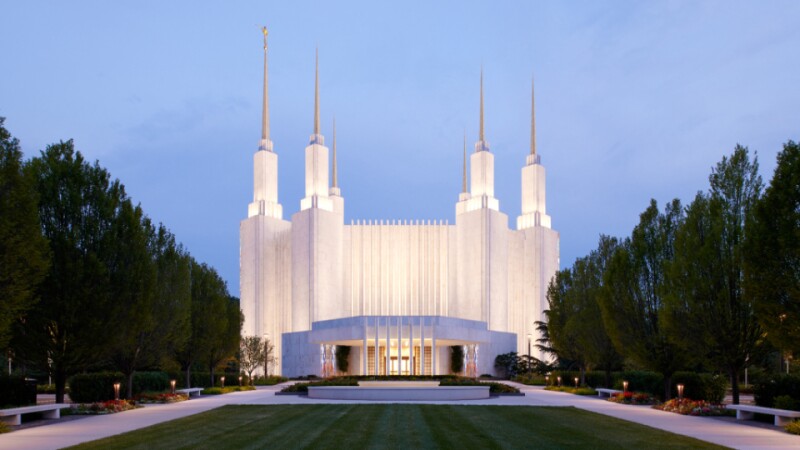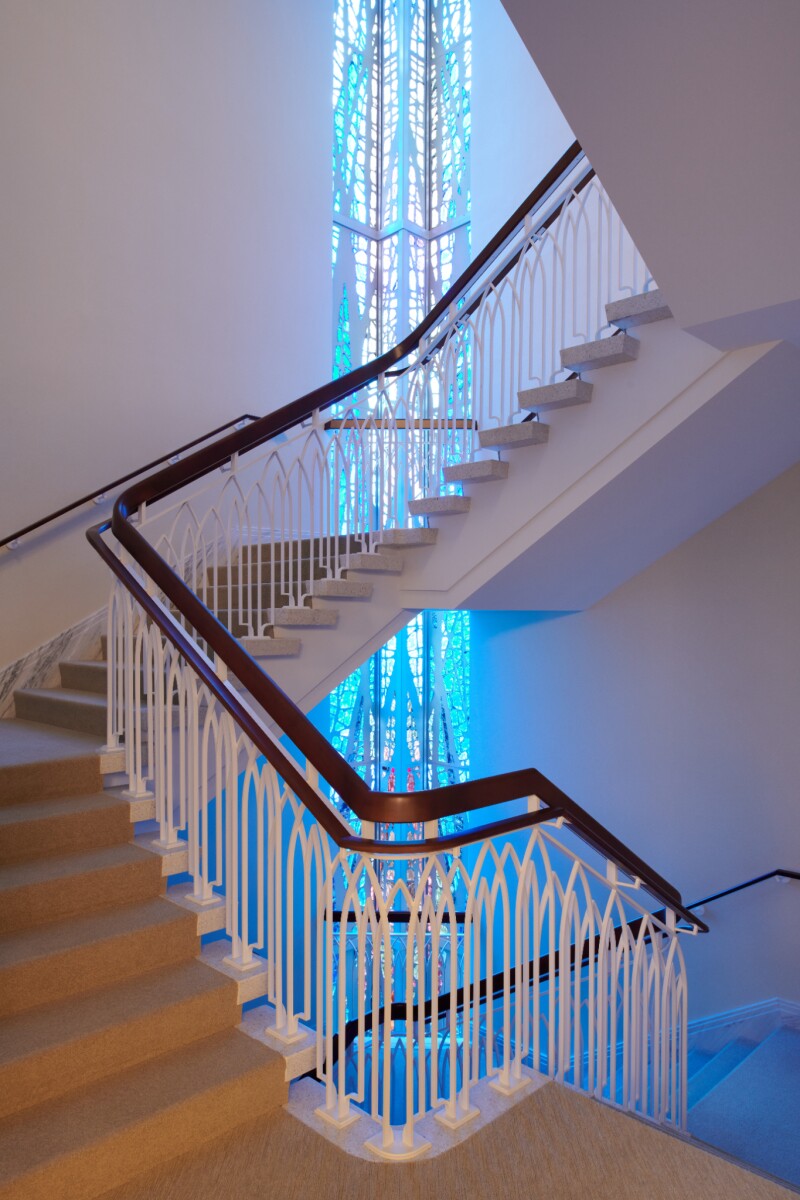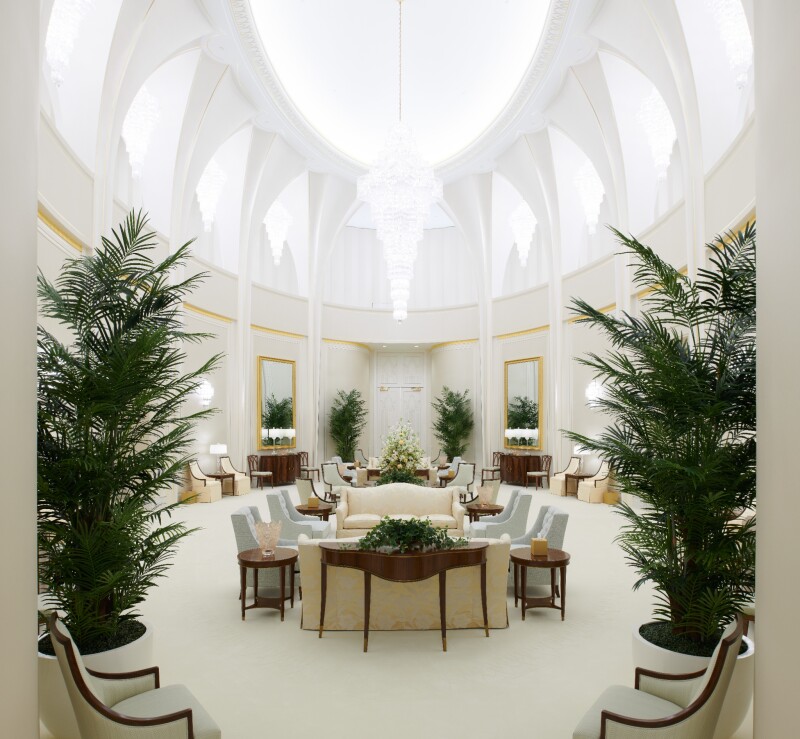In 2018, the Washington D.C. Temple closed its doors for a massive renovation project, rehabilitating the sacred building and making much needed updates to the temple's infrastructure. Public tours for the newly renovated Washington D.C. Temple begin later this month, and the excitement is building among local members of the Church. Latter-day Saints in the area will be able to share the beauty of its interior and explain the ordinances that take place there with friends and family not of our faith.
In a new video from Church Newsroom, Elder David A. Bednar shared, “The temple is very striking from the outside and obviously the iconic view from the beltway, but much more impressive than the actual physical structures are what takes place inside.”
In anticipation of its reopening and open house, here are 12 facts about the Washington D.C. Temple and its renovation you might not know.
1. The Washington D.C. Temple was the first temple of the restoration to be built in the eastern United States since Mormon pioneers went west to Utah.
The temple is on a wooded site in Kensington, Maryland, ten miles north of the United States Capitol, and stands as a well-known landmark along the Capital Beltway. A free shuttle offered by the Church transports patrons and visitors from the nearest DC metro station to the temple.
2. No room was left untouched in the temple renovation.
According to Newsroom, decades-old mechanical, electrical, lighting, and plumbing systems were all updated and made more energy-efficient as part of the Church’s four-year project.

3. The temple is more than 160,000 square feet in size and sits on 52 acres, making it the third largest temple of the Church.
The Washington D.C. Temple is also the tallest temple, standing proudly at 288 feet tall.
4. The design of the Washington D.C. Temple matches that of the Salt Lake Temple.
Both temples have 6 spires, three towers on each end, and a similar foundational footprint. Dan Holt, site project manager for the Church’s Special Projects Department, said, “It was intended to be that way, with the idea that the Salt Lake Temple represented the foundation of the Church, and the Washington D.C. Temple represented the international future of the Church.”
5. The quarry that supplied the original exterior reopened in 2018 just before the renovation began.
The site in Sylacauga, Alabama, from which the original white marble was taken, closed shortly after the temple was originally completed. But in 2018, the quarry reopened, allowing the Church to purchase stone that matches the temple’s exterior. This marble, Holt told Newsroom, has a unique silver veining that turns gold over time as it is exposed to air, water, and sunlight. Over time, the newly installed marble will assimilate with the rest of the original temple stone.

6. LED lights have been installed behind the stained glass panels at the entrance.
The beloved and breathtaking stained glass scene of the tree of life just behind the recommend desk is now more visible with the help of 21st-century technology and meticulously installed lighting behind the panels.
7. Each individual piece of glass on the exterior windows was removed, cleaned, and reinstalled.
The same company of artisans who created the original stained glass windows for the east and west spires of the Washington D.C. Temple were once again commissioned to restore them, which they did by removing each piece of glass by hand, cleaning it, and reinstalling it with a new casing.

8. A pointed Gothic arch motif can be found throughout much of the temple’s interior design.
Historically, the Gothic arch was meant to direct a person’s eyes heavenward. A Gothic arch can be found on door paneling, railings, carpeting, and in other places throughout the temple.
9. Much like the nation’s capitol building just 13 miles away, the Washington D.C. Temple features a rotunda.
The temple also features a domed-oval ceiling in the celestial room and sealing rooms as well.

10. The temple grounds feature 260 new and relocated trees, almost 10,000 shrubs and flowers, a new fountain, and reflecting pool.
Local flora and greenery were used throughout the restyling of the temple grounds.
11. The celestial room features 13 chandeliers.
The largest center chandelier is new to this renovation and features beautiful Austrian-crafted crystal. Each of the other 12 chandeliers in the celestial room sit in their own pointed arch-framed alcoves.
12. The brides’ room includes a cherry blossom theme in the carpeting.
Many temples incorporate local flora into their interior design (e.g., peach blossoms in the Brigham City Utah Temple, mountain prairie flowers in the Philadelphia Pennsylvania Temple), and Washington D.C. is known throughout the world for its stunning cherry trees that bloom every spring.
13. The Washington D.C. Temple is one of just eight temples with a large assembly room.
Historic temples in the 19th century also included large assembly rooms for leaders of the Church or local congregations to gather for special, sacred meetings. According to templefacts.org, just eight temples today have assembly rooms: St. George Utah, Logan Utah, Manti Utah, Salt Lake, Los Angeles California, Washington D.C., Portland Oregon, and Nauvoo Illinois.
Open house dates, times, and ticket information can be found at dctemple.org. The public open house begins on April 28, 2022.
You can watch the full Church Newsroom video about the Washington D.C. Temple history and renovation in the player below.

